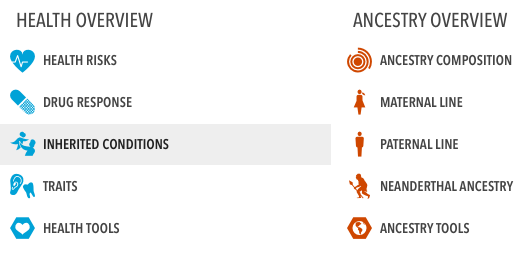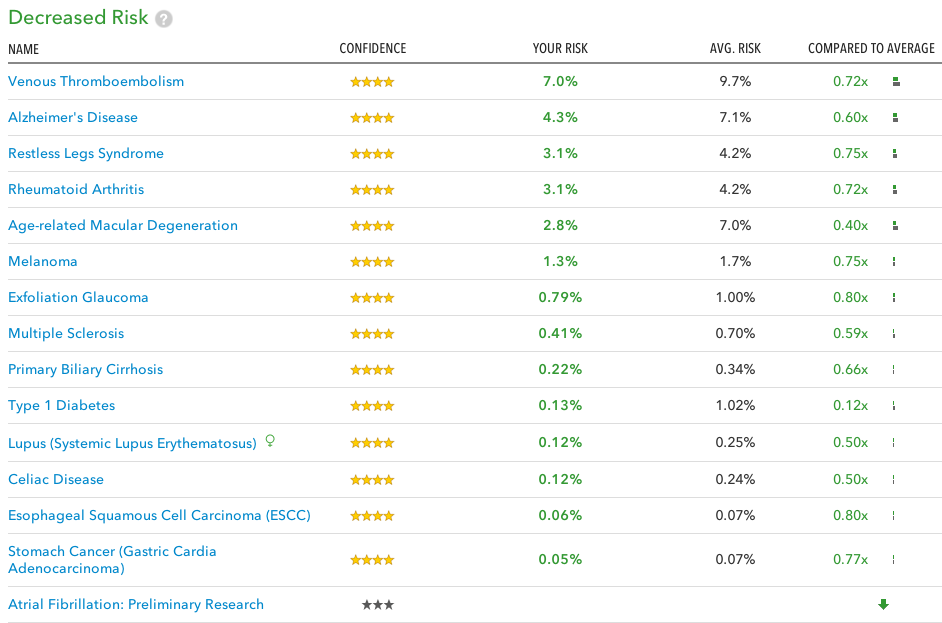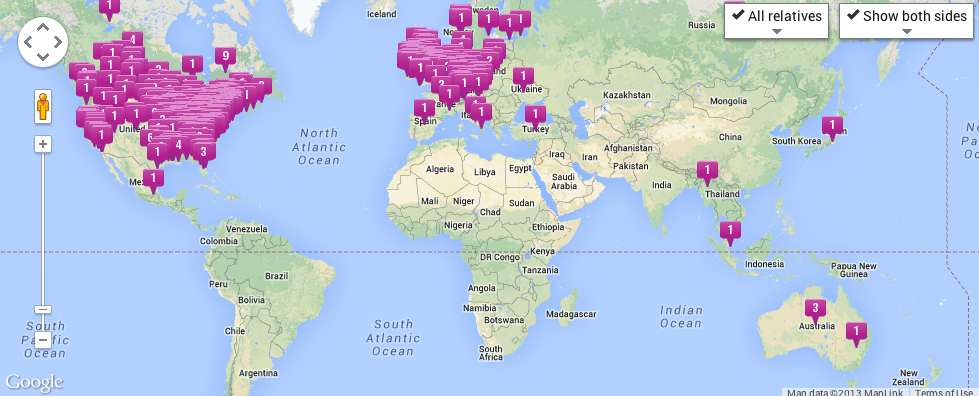The Results Are In!
TweetMy experience with personal genomic testing
NOTE: This is a continuation from a previous post last August.

A few weeks ago I received an e-mail notifying me that my data had been tabulated and my results were now up on 23andMe. Admittedly, I was a smidgen nervous about what would come out of all of this. But, I'm also a curious creature and wanted to know. What did my genes say about me?
My data were broken into ancestry and health overviews. At the time of the initial e-mail notification, only my health results were ready, but they were quickly followed 1 week later by an interesting look into my genetic roots.
Health risks, drug response, and inherited conditions
In the health overview, 23andMe listed my health risks, drug response, inherited conditions, and traits. I was scared, somewhat hesitant, but I did expect to see something mind blowing—I was realistic, of course, but I looked into the data to see pieces of a puzzle that made up who I was.
But there wasn't anything that was all that revealing. A few pieces here or there, but nothing mind blowing. Nothing that would make me change my lifestyle. Was I too optimistic or just naive? For better or for worse, none of the data on any of the health results pages blew me away.

I knew I had an increased risk of endometriosis (my mother was diagnosed with it). Many of the relatives on my mother's side are overweight to obese, so it still wasn't surprising to me that I am at risk of obesity (but note that it's a typical risk level).

a typical risk level
...and I might have blue eyes? Nothing new there. Well, except that it isn't a question that I do indeed have blue eyes. At least the confidence level was high!

I wasn't even surprised by my lowered risk of Alzheimer disease and Parkinson disease (those results are initially locked so you don't have to view them if you don't want to know)—I have a decreased risk for both compared with the general population.

Drug response was a little different. I discovered I have an increased sensitivity to warfarin, a fact that could come in handy down the road. I'm also a fast metabolizer of caffeine; but, like the health risks, that was a bit of a "duh" moment to me. Then I went on to review my likelihood of selected inherited conditions. Nothing out of the ordinary here, either. I was relieved that I didn't have any (selected) BRCA mutations. I didn't suspect I would, but you never know. My grandmother developed breast cancer at the age of 80, so I wasn't sure what my sequencing might reveal.
Health tools
Some of the more interesting (and educational) bits of information on the 23andMe website are the health tools, which involve plugging my data into calculators to determine various risks. But these tools aren't perfect. (I didn't expect them to be, really.)
STROKE AND HEART RISK
There's a Reynolds Risk Score that calculates a person's 10-year risk for stroke and heart disease. Despite the fact that I'm younger than 45 years, the 23andMe calculator still allowed me to plug in my information. It outputted an estimated risk of 0.150%. However, when I visited the original Reynolds Risk score, the calculator wouldn't estimate my risk due to my age and instead provided me with what my results would be had I been 45 years of age (I'm 31 years of age). For women, the calculator only determines risks for those 45 years of age or older. Perhaps, then, the Framingham Risk scoring system would have been a better option for 23andMe, even if it is an older scale. The result is similar (less than 1%) to what 23andMe provided based on the Reynolds Risk calculator, but I don't get an error related to my age. That makes me feel just a little more at ease.
WEIGHT CALCULATOR
And then there's the genetic weight calculator, which seems like the perfect scapegoat for why I can't seem to shed those extra 15 pounds. Like the heart attack risk calculator, I plug in my data to determine my body mass index (BMI)—it is 26, by the way, so I'm a bit overweight—and I find out that my genes account for 6 pounds, or 1 BMI unit, of my weight. At first I feel relieved: I subtract 6 from my total weight and I smirk to myself. So that's why I couldn't make it below the 150-pound hump this year. Uh huh. That's it. Riiiiiight. But then I took a few moments to digest the data. Six pounds is not all that much, but it's still interesting that weight is tied to genetics. It makes me wonder whether it's fair that some employers are choosing to determine the costs of health insurance premiums based on an employee's weight (for example, a heavier person would pay more for health insurance than their presumably "healthier," thinner counterpart). Would the same logic apply to African Americans whose risk is much higher for sickle cell anemia than their white counterparts? Where would such an arbitrary line end? Interesting questions, sure.
Ancestry results
When my ancestry results were complete, I had the option of looking at my ancestry composition, maternal lines, and my Neanderthal makeup. My DNA is made up of 3% Neanderthal DNA, which is slightly higher than most people (2.7%), putting me in the 88th percentile. For all of my adult life my parents have been interested in genealogy, so in my profile I plugged in a few of the surnames I remembered them mentioning years ago. When I reviewed my ancestry results, I found something rather surprising: 23andMe is pretty popular among my relatives! I found someone—likely my second cousin—who has a surname (Kindle) I recognized from those long-ago discussions. I also recognized the place where he was from (Liechtenstein) because I've visited family there before (and family has come from there to visit other family members in the United States).

Well into college life and beyond I was never one to have an interest in my family history. I can't quite explain why—there's no real reason—but seeing these points on the map, each representing someone with similar DNA makeup as me, a leaf on a branch of my family tree, and suddenly I'm feeling vaguely connected to these people. And a tad curious. Oddly so, I think! I sent requests to a few of these distant relatives to gauge their interest in connecting with me. Two lived within hours of me, others lived in Australia, Thailand, Ireland, Germany, and beyond. Two from Europe agreed to connect. Wow, now there's something! Then I wondered if I should send the two who lived in close proximity to me a message. Hey, how's it going? Bits of our DNA match up. We've never met and probably never would have, but wanna meet up for coffee and have a quick chat?
Reflection
Using genomic testing to find relatives is a rather unconventional way of connecting with distant family members and it was, without a doubt, an unexpected result of this experiment. I certainly never expected to find a second cousin in my results, nor the countless other third and fourth cousins spread across the globe. It was touching, really. Maybe we'll connect in person one day and chat about this and that over a vanilla latte. Or maybe we won't. Maybe all we'll share is a tiny bit of DNA.
And, although my results weren't exactly earth-shattering, I suspect that they were exactly the norm. I can't quite put my finger on what insights I expected to gain from embarking on this—albeit rather limited—journey into my genes, but the experience did leave me wondering what I might uncover if I submitted my data to and participated in the Personal Genome Project. I wonder what else I could learn about myself, about my relatives, and what others could learn from my genes. On the surface it didn't feel as though my health results had much to offer me and—maybe like my ancestry results—it's because I didn't quite dig deep enough.





